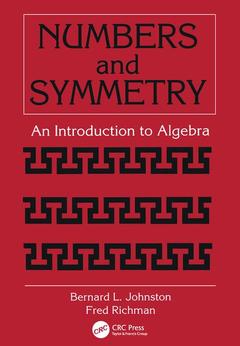Numbers and Symmetry An Introduction to Algebra
Auteur : Johnston Bernard L.

This textbook presents modern algebra from the ground up using numbers and symmetry. The idea of a ring and of a field are introduced in the context of concrete number systems. Groups arise from considering transformations of simple geometric objects. The analysis of symmetry provides the student with a visual introduction to the central algebraic notion of isomorphism.
Designed for a typical one-semester undergraduate course in modern algebra, it provides a gentle introduction to the subject by allowing students to see the ideas at work in accessible examples, rather than plunging them immediately into a sea of formalism. The student is involved at once with interesting algebraic structures, such as the Gaussian integers and the various rings of integers modulo n, and is encouraged to take the time to explore and become familiar with those structures.
In terms of classical algebraic structures, the text divides roughly into three parts:
Date de parution : 08-2017
15.6x23.2 cm
Thèmes de Numbers and Symmetry :
Mots-clés :
Gaussian Integers; Greatest Common Divisor; Gaussian primes; Reduced Row Echelon Form; symmetry groups; Vice Versa; concrete number systems; Finite Field; isomorphism; Division Algorithm; modern algebra; Elementary Row Operations; Symmetry Group; Parity Check Matrix; Ordinary Integer; Euclidean Algorithm; Algebraic Integer; Prime Integer; Isomorphism Invariant; Odd Prime; Gaussian Prime; Nonzero Element; Monic Polynomial; Cyclic Code; Linearly Independent; Frieze Pattern; BCH Code; Rational Numbers; Row Echelon Form; Reed Solomon Code



